
Hudson's Bay, also known as The Bay, is a Canadian department store chain. It is the flagship brand of the Hudson's Bay Company (HBC), the oldest and longest-surviving company in North America as well as one of the oldest and largest continuously operating companies in the world.

Canada has a large domestic and foreign tourism industry. The second largest country in the world, Canada's wide geographical variety is a significant tourist attractor. Much of the country's tourism is centred in the following regions: Toronto, Montreal, Quebec City, Vancouver/Whistler, Niagara Falls, Vancouver Island, Canadian Rockies, British Columbia's Okanagan Valley, Churchill, Manitoba and the National Capital Region of Ottawa-Gatineau. The large cities are known for their culture, diversity, as well as the many national parks and historic sites.

The Bank of Montreal, abbreviated as BMO, is a Canadian multinational investment bank and financial services company.
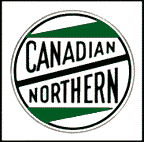
The Canadian Northern Railway (CNoR) was a historic Canadian transcontinental railway. At its 1923 merger into the Canadian National Railway, the CNoR owned a main line between Quebec City and Vancouver via Ottawa, Winnipeg, and Edmonton.

The Canadian Bank of Commerce was a Canadian bank that operated from 1867 to 1961. It merged in 1961 with the Imperial Bank of Canada to form the Canadian Imperial Bank of Commerce, which today is one of Canada's Big Five banks.
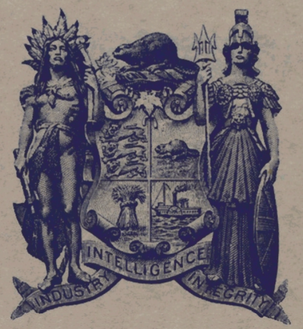
The Bank of Toronto was a Canadian bank that was founded in 1855 by a group of grain dealers and flour millers. On February 1, 1955, it merged with the Dominion Bank to form the Toronto-Dominion Bank. Its first president was James Grant Chewett, whose support was sought by financier Thomas Clarkson.

A Canadian Forces base or CFB is a military installation of the Canadian Armed Forces. For a facility to qualify as a Canadian Forces base, it must station one or more major units.

The Bank of Upper Canada was established in 1821 under a charter granted by the legislature of Upper Canada in 1819 to a group of Kingston merchants. The charter was appropriated by the more influential Executive Councillors to the Lt. Governor, the Rev. John Strachan and William Allan, and moved to Toronto. The bank was closely associated with the group that came to be known as the Family Compact, and it formed a large part of their wealth. The association with the Family Compact and its underhanded practices made Reformers, including Mackenzie, regard the Bank of Upper Canada as a prop of the government. Complaints about the bank were a staple of Reform agitation in the 1830s because of its monopoly and aggressive legal actions against debtors.
Darling and Pearson was an architectural firm based in Toronto from 1895 through 1937. The firm was prolific and produced consistently fine work though the patronage of notable figures of the Canadian establishment, and is responsible for enhancing the architectural character and quality of the city, and indeed the rest of Canada, in the first quarter of the 20th century.

Brookfield Place is an office complex in downtown Toronto, Ontario, Canada, comprising the 2.1 ha (5.2-acre) block bounded by Yonge Street, Wellington Street West, Bay Street, and Front Street. The complex contains 242,000 m2 (2,604,866 sq ft) of office space, and consists of two towers, Bay Wellington Tower and TD Canada Trust Tower, linked by the Allen Lambert Galleria. Brookfield Place is also the home of the Hockey Hall of Fame.

The Dominion Public Building is a five-storey Beaux-Arts neoclassical office building built between 1926 and 1935 for the government of Canada at southeast corner of Front and Bay streets in Toronto, Ontario, Canada.

The Bank of Hamilton was established in 1872 by local businessmen in the city of Hamilton, Ontario, Canada under the leadership of Donald McInnes, the bank's first President. Like the other Canadian chartered banks, it issued its own paper money. The bank issued notes from 1872 to 1922. The end dates are the final dates appearing on notes, which may have circulated for some time after.
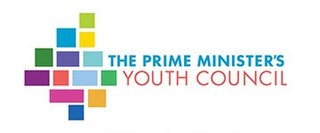
The Prime Minister's Youth Council is an advisory board created by the Prime Minister of Canada Justin Trudeau in 2016. Currently, 10 Canadian youth aged 16 to 24 comprise the non-partisan board. Members advise the prime minister on education, economy, climate change and other issues affecting youth.

Ralph Benjamin Pratt was a Canadian architect known for his work as a staff architect for the Canadian Pacific Railway and the Canadian Northern Railway, and for his work as a member of the firm Pratt and Ross with partner architect Donald Aynsley Ross.

The Union Bank of Canada was a Canadian chartered bank which operated 1865–1925, primarily in the Canadian Prairies.
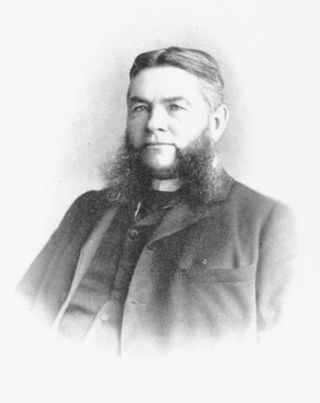
The Honourable Hugh Ryan was an Irish-Canadian railway magnate, industrialist, banker, philanthropist and eldest son of John Patrick Ryan and Margaret Conway. His family immigrated to Montreal, Canada, from Limerick, Ireland, in 1841 during the first wave of Irish-Catholic immigration after selling Gortkelly Castle to another branch of the Ryan clan. He was dubbed "Canada's wealthiest and greatest railroad contractor".

The Domville Building is a historic bank branch in Saint John, New Brunswick. Operated by the Bank of Montreal as one of its current branches, it is located on 2 King Street, at the southeast corner of King and Prince William Streets. Built in 1878 and used by the Bank of Montreal since its completion, it is a Second Empire style structure built using sandstone. The Domville Building is located within the Trinity Royal Heritage Conservation Area.
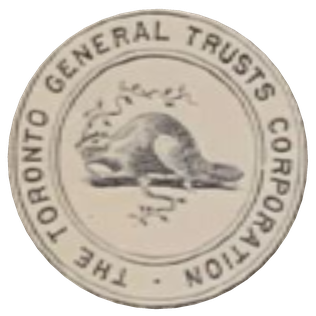
The Toronto General Trusts Corporation was a Canadian trust company that existed from 1872 to 1961. The country's first trust company, the TGT received its charter in 1872, but did not begin operations until 1882. Founded as the Toronto General Trusts Company, in 1899 it took over the Trust Corporation of Ontario, at which time it changed its name to the Toronto General Trusts Corporation. By the 1950s, Toronto General was Canada's fourth largest trust company after Royal Trust, Montreal Trust, and National Trust.

























